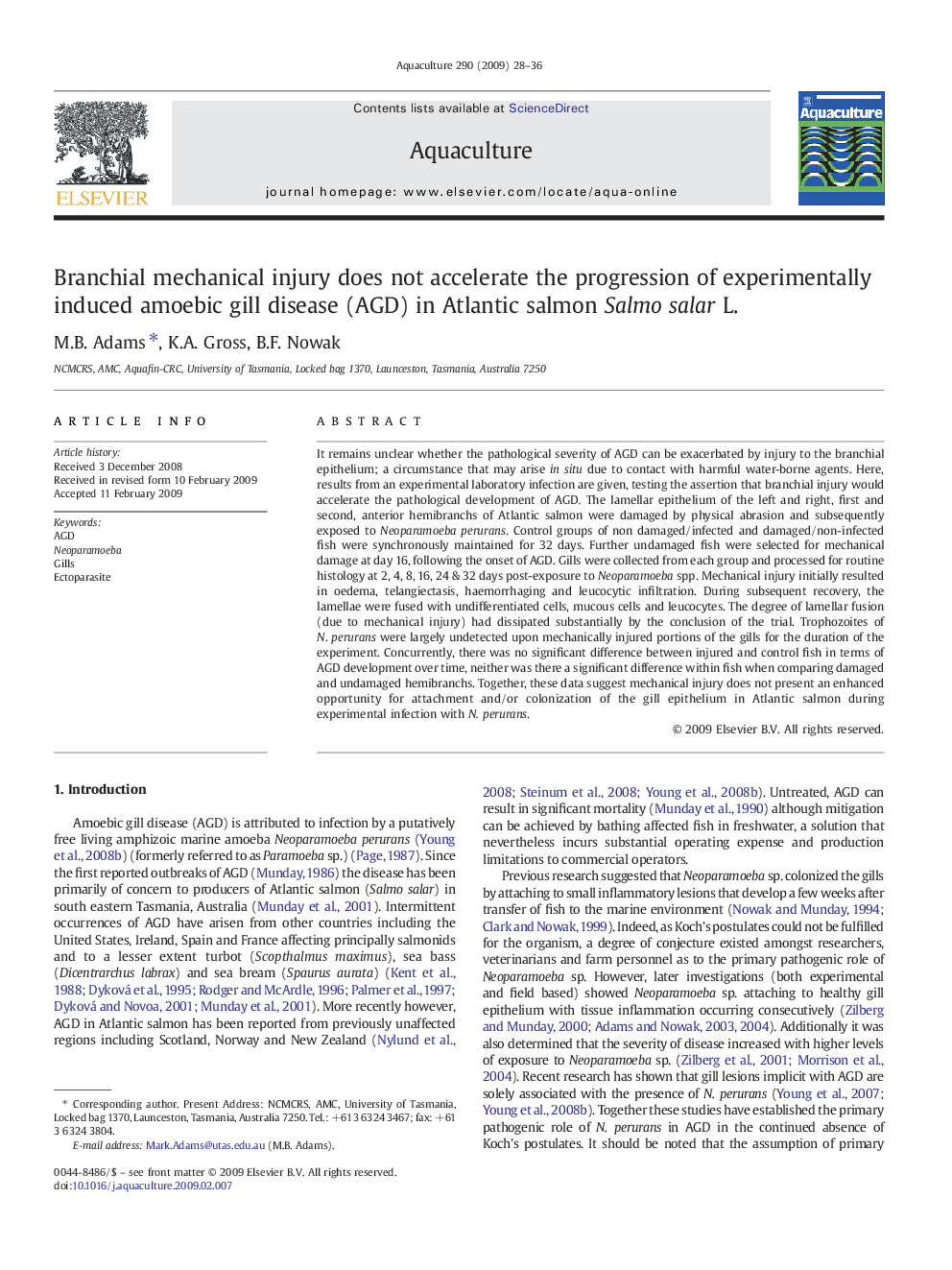| Article ID | Journal | Published Year | Pages | File Type |
|---|---|---|---|---|
| 2424256 | Aquaculture | 2009 | 9 Pages |
It remains unclear whether the pathological severity of AGD can be exacerbated by injury to the branchial epithelium; a circumstance that may arise in situ due to contact with harmful water-borne agents. Here, results from an experimental laboratory infection are given, testing the assertion that branchial injury would accelerate the pathological development of AGD. The lamellar epithelium of the left and right, first and second, anterior hemibranchs of Atlantic salmon were damaged by physical abrasion and subsequently exposed to Neoparamoeba perurans. Control groups of non damaged/infected and damaged/non-infected fish were synchronously maintained for 32 days. Further undamaged fish were selected for mechanical damage at day 16, following the onset of AGD. Gills were collected from each group and processed for routine histology at 2, 4, 8, 16, 24 & 32 days post-exposure to Neoparamoeba spp. Mechanical injury initially resulted in oedema, telangiectasis, haemorrhaging and leucocytic infiltration. During subsequent recovery, the lamellae were fused with undifferentiated cells, mucous cells and leucocytes. The degree of lamellar fusion (due to mechanical injury) had dissipated substantially by the conclusion of the trial. Trophozoites of N. perurans were largely undetected upon mechanically injured portions of the gills for the duration of the experiment. Concurrently, there was no significant difference between injured and control fish in terms of AGD development over time, neither was there a significant difference within fish when comparing damaged and undamaged hemibranchs. Together, these data suggest mechanical injury does not present an enhanced opportunity for attachment and/or colonization of the gill epithelium in Atlantic salmon during experimental infection with N. perurans.
